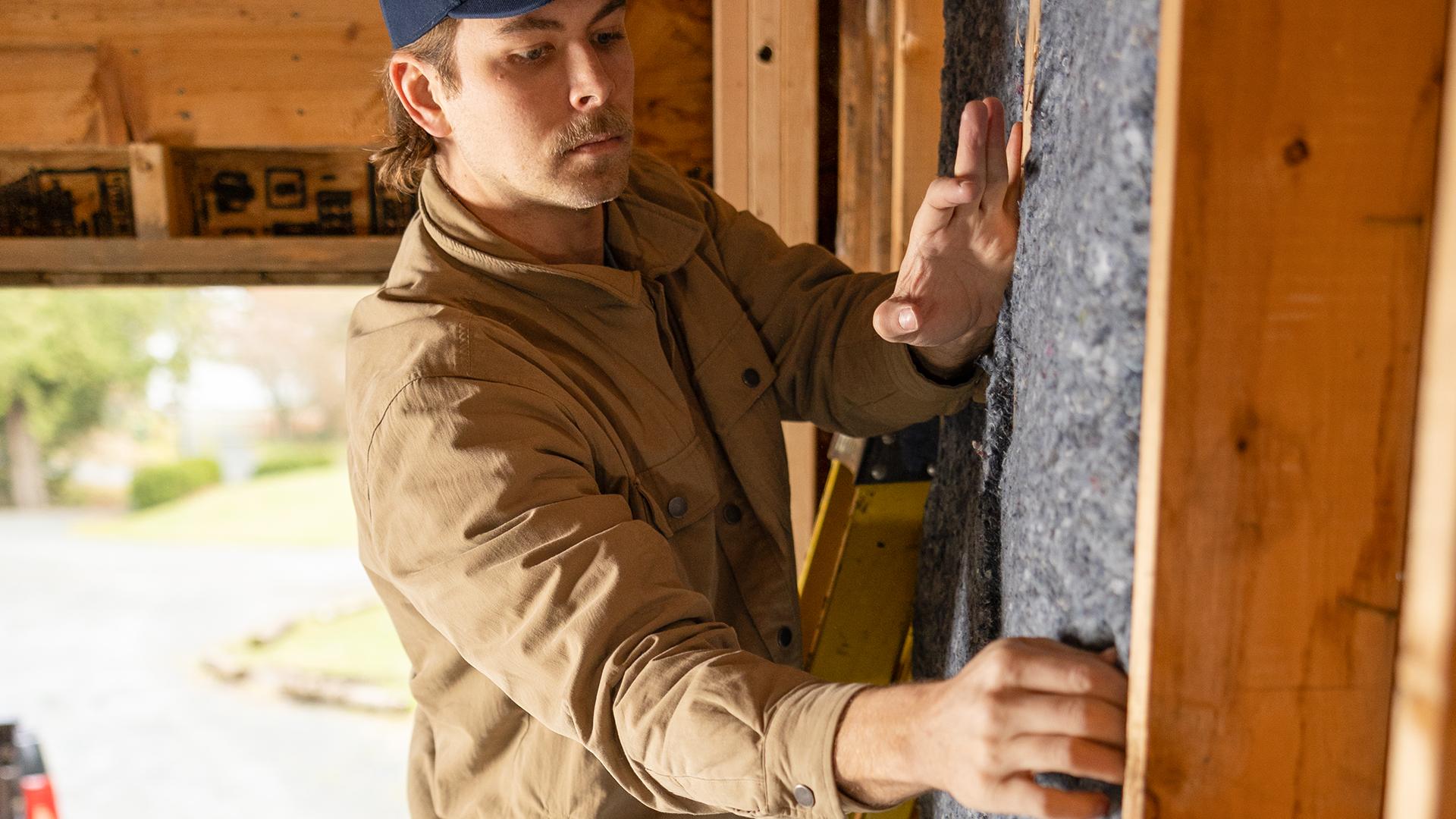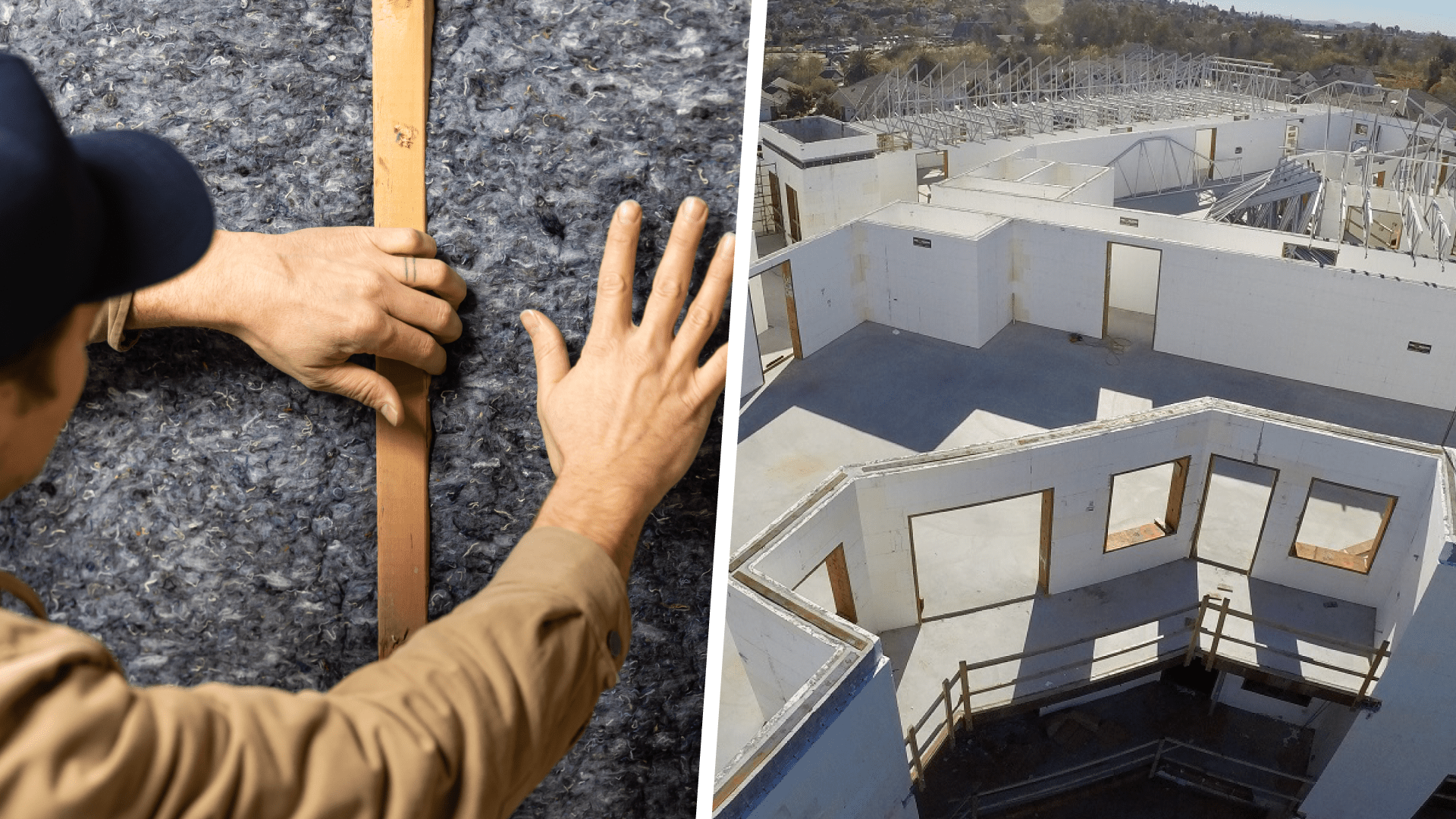The benefits of insulating your home yourself go far beyond cutting energy bills. DIY home insulation can also improve comfort, reduce unwanted noise, and support healthier indoor air—all while giving you the freedom to work on your own schedule. With the right tools and materials, even first-time DIYers can tackle insulation projects that truly make a difference.
Quiet Denim is a clean, safe, and DIY-friendly solution that supports your goals for a more efficient, comfortable, and quieter home.
Why Consider DIY Home Insulation?
There are plenty of reasons to explore DIY home insulation ideas, especially if you’re looking for practical ways to enhance energy efficiency. Doing the work yourself lets you save on labor costs and make progress at your own pace. You can tackle one area at a time—starting with high-impact zones like basements or interior walls—and build toward a better-insulated home overall.
DIY insulation also empowers you to make healthier material choices. Quiet Denim, for example, is a healthier option that avoids harsh chemicals and supports cleaner indoor spaces. Plus, it helps block sound transmission from room to room, making it ideal for enhancing peace and privacy.
Best DIY Home Insulation Solution
Quiet Denim batts are uniquely suited for home insulation projects. They’re made from recycled denim, the fabric you know and love—no fiberglass, no itch, and no special gear needed. The batts friction-fit securely between studs, eliminating the need for staples or adhesives in most cases.
Use it in wall cavities, ceilings, or around plumbing runs to enhance energy efficiency and minimize indoor sound transfer. It’s also a top pick for anyone wanting a greener, healthier insulation solution.
Where to Start: Easiest DIY Insulation Projects
The best way to start is by choosing straightforward, high-value upgrades:
- Drywall renovations or interior wall replacements — Ideal if you’re already doing repairs or remodeling. Open walls make it easy to insert batts, seal air gaps, and finish cleanly.
- Basement rim joists or crawlspace walls — Often underinsulated in older homes. Measure the cavities, friction-fit the batts, and seal around any penetrations to stop drafts.
- Light switches, outlets, and exposed pipes — Sealing behind fixtures or wrapping plumbing lines can reduce drafts and heat loss.
- Shared garage walls — Insulating walls between garages and living areas can reduce both noise and temperature swings.
These are all small projects that can deliver big returns in comfort and energy savings.
Step-by-Step Tips for DIY Success
A few smart techniques will help you get better results from your DIY home insulation effort:
- Measure and cut precisely.
Measure stud or joist cavities carefully and cut each batt slightly wider than the opening. This ensures a snug, gap-free fit that improves overall performance. - Ventilate enclosed areas.
If you’re working in attics, crawlspaces, or tight wall sections, make sure the space is well ventilated. Even with clean products like Quiet Denim, basic airflow helps maintain a safer environment. - Use basic safety gear.
Gloves and a dust mask are good to have on hand, especially in dusty or enclosed conditions. Quiet Denim is safe to touch, but good practices still matter. - Seal air leaks before installing.
Use caulk or low-expanding foam to seal gaps around windows, outlets, or pipe runs. Air sealing before you insulate dramatically boosts energy efficiency. - Avoid compressing the material.
Insulation works by trapping air. When it’s packed too tightly, its thermal performance drops. Always cut smaller pieces when needed—don’t jam full batts into tight spots.
Even with solid prep, it’s important to know what not to do—some common missteps can undo the benefits of your hard work.
Common Mistakes to Avoid
Even well-intentioned DIY insulation projects can fall short if a few key details are overlooked. Here’s what to watch for to make sure your effort pays off.
Gaps or Compressed Insulation
One of the most common issues is leaving gaps or compressing the insulation, both of which reduce the R-value and create uneven performance across the space.
Skipping Air Sealing
Even high-quality insulation won’t stop airflow if you don’t address leaks first. Air sealing around fixtures, doors, and junction boxes is crucial for achieving the full energy benefit.
Using the Wrong Insulation for the Space
Be sure to match the insulation to your zone and project type. Not all materials are rated for every application.
Misusing Vapor Barriers
Overusing vapor barriers—especially in moisture-prone or mixed-climate zones—can trap condensation. Always check local code requirements and use vapor control strategies suited to your region.
Energy Savings & Comfort Benefits
DIY insulation upgrades create noticeable improvements across your home:
- Quieter rooms — Especially helpful for bedrooms, home offices, or media spaces.
- Thermal efficiency — Quiet Denim’s dense fiber matrix adds built-in temperature stability.
- Lower energy bills — Improved insulation reduces HVAC strain and seasonal fluctuation.
- Healthier indoor air — Quiet Denim contains no formaldehyde and emits very low VOCs.
Why Material Choice Matters for Long-Term Results
You’ll also see the financial benefit in lower monthly energy bills. Improved insulation reduces HVAC strain, stabilizes indoor temperatures, and helps you stay more comfortable in both summer and winter.
Quiet Denim also contributes to a healthier indoor environment. It contains no formaldehyde, emits very low VOCs, and supports better air quality compared to traditional fiberglass or foam-based options.
Your Next Step to a More Efficient, Comfortable Home
DIY home insulation projects are a smart, rewarding way to improve your space. With the right tools and materials, you can minimize energy loss, improve comfort, and optimize your home’s performance.
Start with small wins and upgrade your home’s efficiency—one panel at a time. Consult with the insulation specialists at Quiet Denim today to explore your options.



